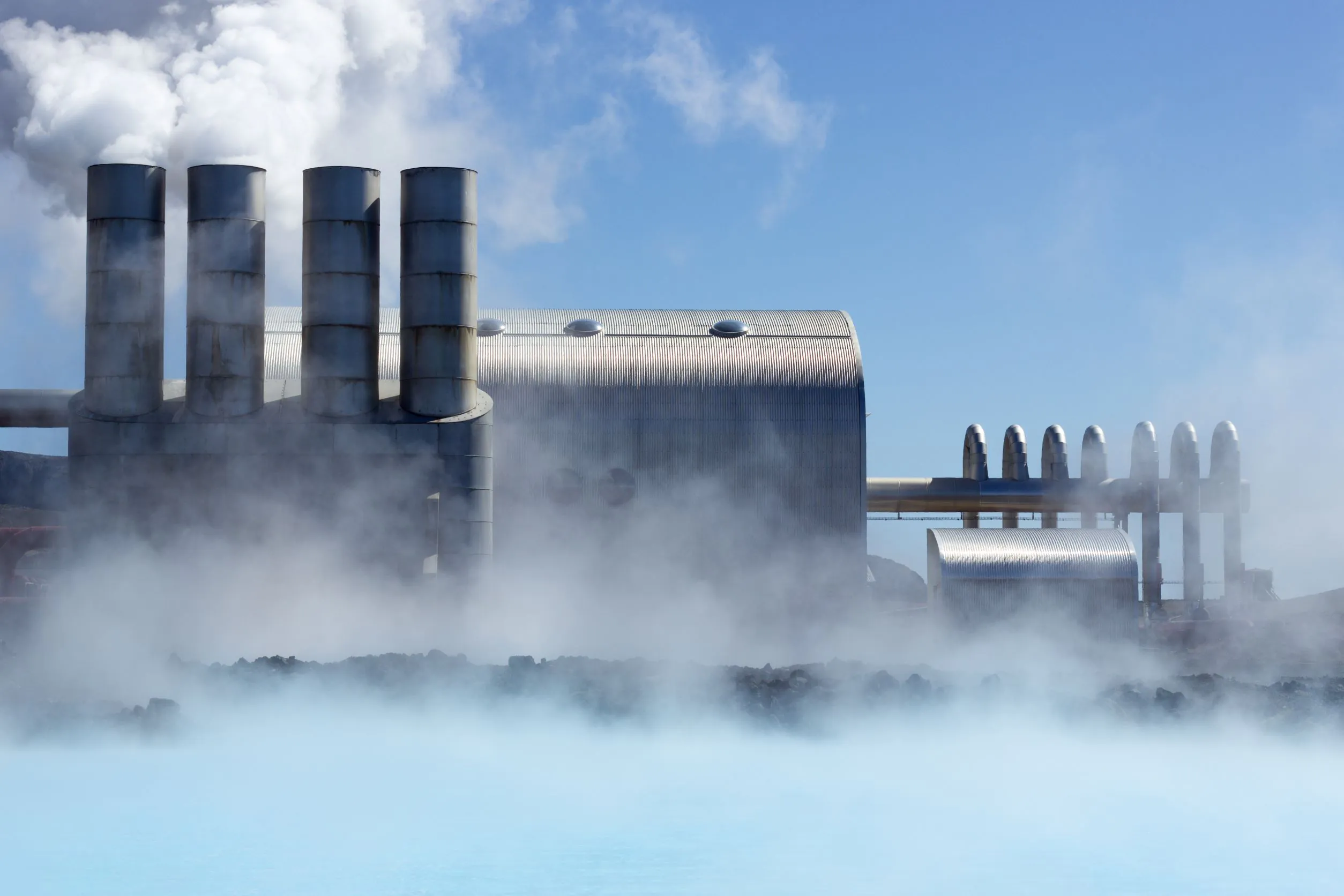Geothermal power is something of a dark horse when it comes to renewable energy discussions and initiatives. Technologies like wind and solar power are well known and funded, but despite being in use since the early 1900s, geothermal power only accounts for approximately 0.3% of global electricity generation, with about 15 GW of operating capacity worldwide according to the International Renewable Energy Agency (IRENA).
Recently, however, events such as the adoption of the Paris Climate Agreement have brought both attention and funding to geothermal research, and new processes and technologies are being developed that will help this renewable energy source become more widespread.
What is Geothermal Power and How Does it Work?
Geothermal power takes advantage of the natural high temperatures beneath the earth to provide heat and to generate electricity. The most common way to turn this heat into energy is to use steam from hot water reservoirs to turn a turbine that generates electricity. Typically this involves locating an existing reservoir and drilling down in order to access it and install the necessary infrastructure.
Electricity isn’t the only way geothermal energy is used, however. It can also provide effective heating and cooling through the use of geothermal heat pumps. This passive geothermal energy can be accessed at only 5-15 feet below the surface. The heat pumps exchange air from underground with the air from the building, heating the area in winter and cooling it during the summer. Passive heating can also be used for various industrial processes.
Learn More About the Electric Power Industry
The Strengths and Weaknesses of Geothermal Power
There are many advantages to using geothermal power. One of its key strengths compared to solar and wind power is its continuous availability. It doesn’t rely on the presence of something like wind or sunlight in order to generate heat or electricity, making it a good complement to those types of renewable energy. It’s also more flexible, as it is easy to increase or reduce power production as needed. Geothermal fields emit about 17% of the amount of CO₂ that natural gas plants do, and depending on the methods used, may emit none at all.
Though it requires a heavy up-front investment, geothermal equipment is long-lasting and is very cost-effective in the long term. And because most of the infrastructure is underground, geothermal power is resistant to many natural disasters. Finally, this is a form of renewable energy that has a significant overlap with the oil and gas industry in terms of skill and technology. With oil and gas companies seeing falling demand and a loss of jobs, getting into geothermal power can be a good way for these businesses to redirect resources and take advantage of their existing expertise.
So why does geothermal power make up such a small percentage of global electricity generation? Traditionally, one of the primary limitations has been location. The best areas to develop these power plants in are places with tectonic activity, making the Ring of Fire — the region around the Pacific Ocean — a prime location. This is where hydrothermal resources have been easiest to locate and access, meaning that many regions have not had reliable access to this type of power, and the areas that are easiest to find have typically already been tapped. However, this has been changing in recent years, with innovations in drilling technology and in types of geothermal power plants making it possible to find and harness this energy more easily.
The other major barrier is cost. The upfront costs of a geothermal project are substantial: well drilling and construction can make up 40% to 50% of total costs, and companies run the risk of finding a dry hole that cannot be used for a power plant. To mitigate that risk and encourage geothermal development, some European governments are insuring companies against this, but even when successful, geothermal companies are essentially paying for several decades’ worth of energy up front. Capital costs typically amount to around $2,500 per installed kilowatt, compared to $1,200 to 1,700 per kilowatt for solar and wind power, which have the advantage of many financial incentives and lower risks.
Once a geothermal plant has been constructed, however, operating costs are relatively low, and the levelized cost of energy (LCOE) over the plant’s lifetime is very competitive. In addition, the growing concerns around climate change and the introduction of the Paris Climate Agreement have prompted governments to increase funding for renewable energy projects and carbon reduction initiatives, and businesses have begun investing more heavily into geothermal technology. Research and development are becoming more affordable, and more geothermal power projects are taking shape.
What is the Future of Geothermal Power?
Greater funding opportunities and growing interest in geothermal technology are driving innovation in the industry. Existing systems are being made more powerful and efficient, and new techniques are in development. Both industry giants and young startups are entering the industry, from established corporations like BP and Chevron to new entrants such as Eavor and Fervo.
Find Geothermal Companies on BizVibe
Enhanced geothermal systems (EGS) are one method of accessing geothermal power in areas where it has traditionally been unavailable. Creating an EGS involves drilling down to access much deeper reservoirs than traditional power plants have used, due to the challenges involved in drilling deeply enough through solid rock. It can also involve creating a reservoir where one didn’t originally exist. While EGS projects have been in the works for over a decade now, they’ve struggled to obtain sufficient funding and develop the necessary technology. But 2020 brought new opportunities with greater public interest, investments, and demand, along with technologies from the oil and gas industry. Now established companies are running successful EGS projects and startups like Fervo are joining the market as well.
Another type of project helping to expand the geothermal power industry is the advanced geothermal system (AGS), a closed-loop system where fluids are not added or removed during operation, instead circulating underground to send heated water to the surface and return cooled water below to be reheated. These closed-loop systems have been in use for a long time, but new technologies and innovations allow them to help helping drive the market today.
Funding is, of course, essential to developing geothermal technology to the point where it can be used more widely and support a greater amount of the world’s electricity needs. The past few years have seen a flood of funding and other support from these projects by governments and investors around the world.
Just this month, for example, the US Department of Energy (DoE) announced it would provide up to US$8.4 million to four projects to produce geothermal energy from abandoned oil and gas wells. In Canada, the province of British Columbia announced a partnership with five indigenous communities to build clean energy projects, including a geothermal project by Kitselas First Nation that has been in development since 2014. The Danish pension fund ATP is investing in what will be the EU’s largest geothermal power plant, which is being built in Aarhus, Denmark. The World Bank recently approved two loans worth US$300 million for Turkey’s Geothermal Development Project. Around the world, geothermal power is picking up steam.



